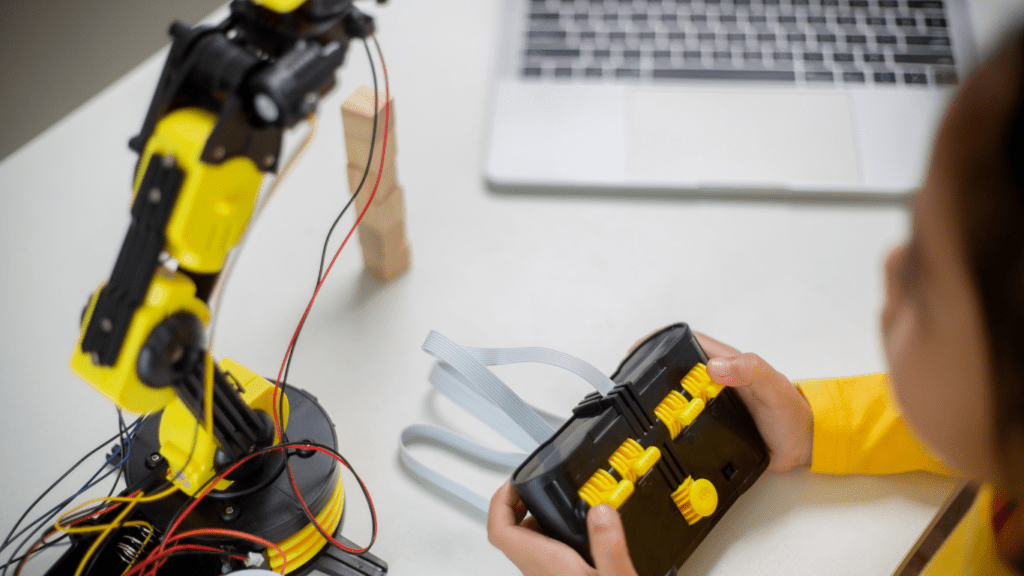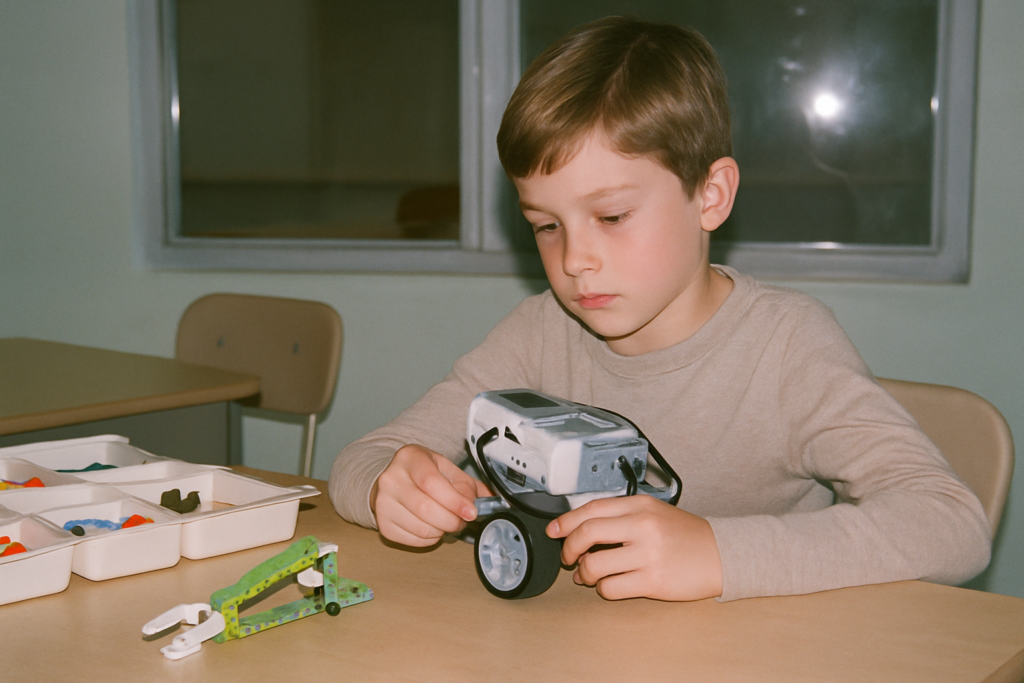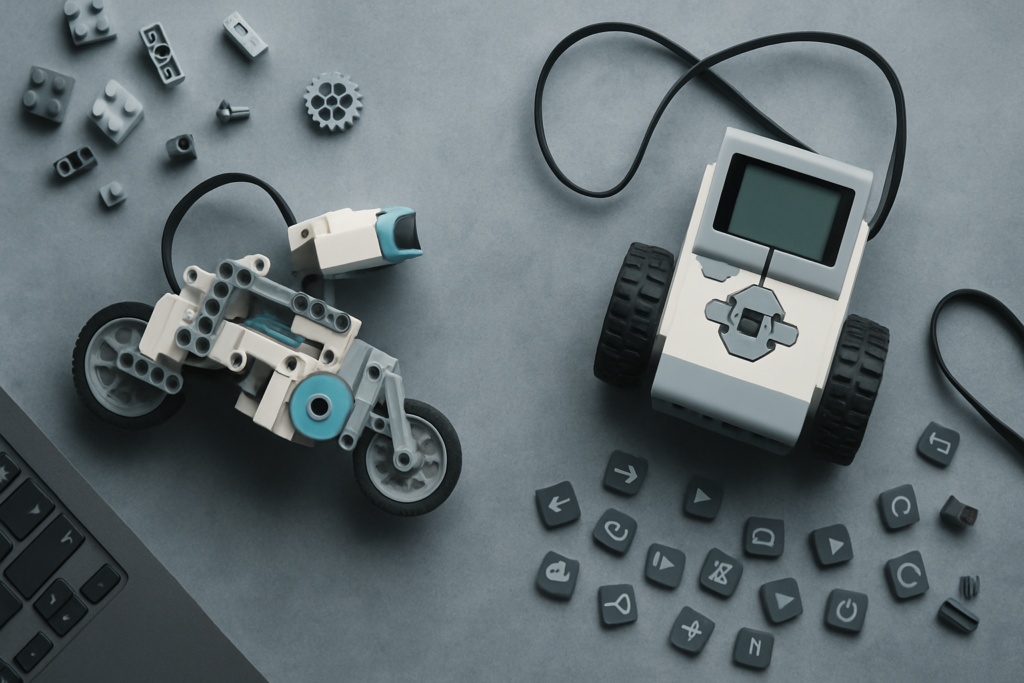The Importance of STEM Education
STEM education is crucial for preparing children for future challenges. It equips students with the necessary skills to thrive in a technology-driven world.
Why Focus on STEM?
STEM encompasses science, technology, engineering, and math, forming the foundation of innovation. Focusing on STEM helps kids develop analytical skills and problem-solving abilities. According to the U.S.
Department of Commerce, STEM occupations grow at twice the rate of non-STEM jobs. Encouraging STEM studies prepares children for these high-demand careers.
Benefits of Early Exposure to STEM
Early exposure to STEM fosters curiosity and critical thinking. Children learn better when they interact with engaging materials.
A study by the Brookings Institution illustrates that early STEM learning improves cognitive development. Interactive gaming toys bridge the gap between play and education, making complex concepts approachable.
By integrating entertainment and learning, these toys lay the groundwork for a solid STEM foundation.
What Are Interactive Gaming Toys?
Interactive gaming toys combine play with learning through engaging, educational experiences. These toys use technology to enhance traditional play, fostering STEM learning.
Defining Interactive Gaming Toys
Interactive gaming toys incorporate elements like sensors, augmented reality, or touchscreens to create immersive play. They’re designed to be both fun and educational, covering subjects like coding, electronics, and robotics.
Products such as LEGO Mindstorms, Osmo kits, and Sphero robots exemplify how these toys bring STEM concepts to life. Children interact with these toys through apps, physical manipulation, or both, providing a hands-on learning experience.
How These Toys Enhance Learning
These toys enhance learning by making abstract STEM concepts tangible. When children build a robot with LEGO Mindstorms, they learn principles of engineering and programming.
Interactive apps like Osmo teach math and reading through engaging, game-based activities. Sphero robots demonstrate physics principles via movement.
These toys encourage problem-solving as children figure out how to complete tasks or overcome challenges. They also nurture critical thinking by prompting kids to strategize and adapt their approach based on real-time feedback from the toys.
Encouraging STEM Learning Through Toys
Interactive gaming toys provide a hands-on, engaging way to introduce STEM concepts to children. These toys combine learning with play, creating an environment where kids can explore science, technology, engineering, and math naturally.
Key Features of Effective STEM Toys
Effective STEM toys exhibit certain features that make them beneficial for children’s learning:
- Engagement: Toys like robotic kits and coding games hold children’s attention and foster sustained interest in STEM topics.
- Interactivity: Successful toys require active participation, promoting hands-on learning and problem-solving.
- Scalability: Toys should grow with the child, offering increasingly complex challenges as skills develop, like LEGO Mindstorms or Snap Circuits.
- Educational Value: High-quality STEM toys align with educational standards, ensuring relevant learning; examples include Osmo kits and LittleBits.
- Safety: Look for toys that adhere to safety regulations, ensuring they are suitable for children’s age and development.
- LEGO Mindstorms: Combines building with programming, allowing kids to create and command their robots, enhancing engineering and coding skills.
- Osmo Kits: Use augmented reality to merge physical play with digital learning, teaching math, spelling, and coding in an engaging manner.
- Sphero Robots: App-enabled robotic balls that teach programming through play, making abstract coding concepts tangible.
- Snap Circuits: Introduces basic electronics concepts through easy-to-assemble circuits, sparking an interest in engineering.
- LittleBits: Electronic building blocks that snap together to create functional circuits, reinforcing electronic concepts and creative thinking.
Impact of Interactive Gaming Toys on Learning

Interactive gaming toys significantly enhance learning by fostering critical thinking, problem-solving, and engagement in STEM areas. These toys blend education and entertainment, making complex concepts easier to grasp.
Cognitive Benefits
Interactive gaming toys stimulate cognitive growth in children. They challenge users to think critically, solve problems, and apply logic skills.
For instance, LEGO Mindstorms encourage children to build and program robots, enhancing their understanding of mechanics and software coding. Osmo kits, integrating physical play with digital learning, sharpen spatial reasoning and math skills.
Research indicates that such:
- toys boost memory retention
- pattern recognition
- hypothesis testing
crucial for STEM success.
Social and Emotional Development
These toys also support social and emotional growth. Players often work in teams, improving communication, collaboration, and interpersonal skills.
Sphero robots, for example, can be programmed by groups of children working together, fostering teamwork and shared problem-solving. Interactive toys like LittleBits also build confidence as children see tangible results from their efforts.
Enhancing emotional resilience, they encourage persistence after failure, promoting a growth mindset essential for continuous learning in STEM fields.
Choosing the Right STEM Toys
Selecting the right STEM toys enhances a child’s learning experience. Focus on factors like age appropriateness, safety, and the balance between educational value and entertainment.
Age Appropriateness and Safety
Choose STEM toys based on the child’s age. Toys designed for specific age groups ensure the right level of challenge. For example, building blocks suit toddlers while programmable robots fit older kids.
Check for non-toxic materials and small parts to ensure safety. Adhere to manufacturer guidelines for age recommendations and supervise younger children during play.
Educational Value vs. Entertainment
Evaluate the educational value of STEM toys versus their entertainment aspect. Opt for toys that teach fundamental concepts while being engaging.
For instance, coding games can introduce programming logic, and chemistry sets can teach basic scientific principles. Ensure the toy holds the child’s interest without sacrificing educational content.
Balancing fun and learning ensures sustained engagement and effective educational impact.



